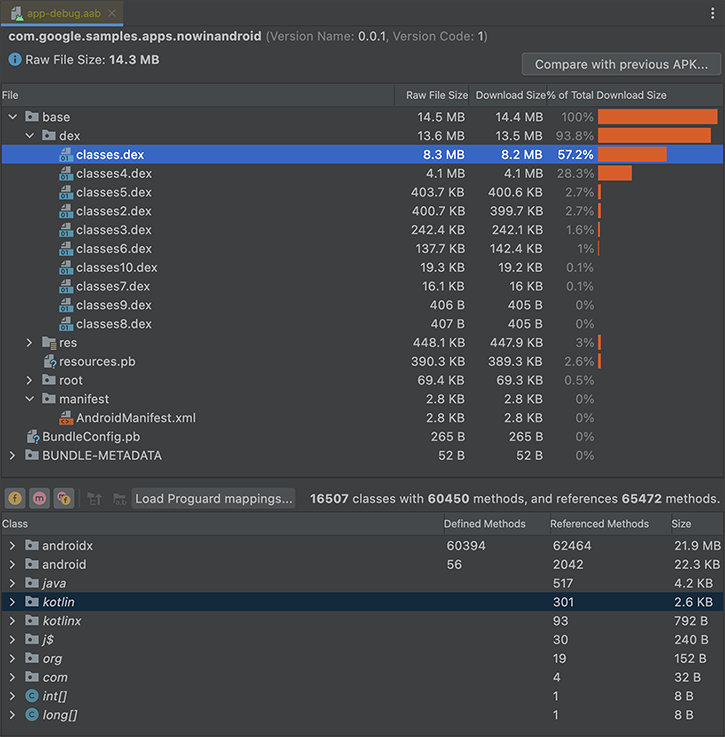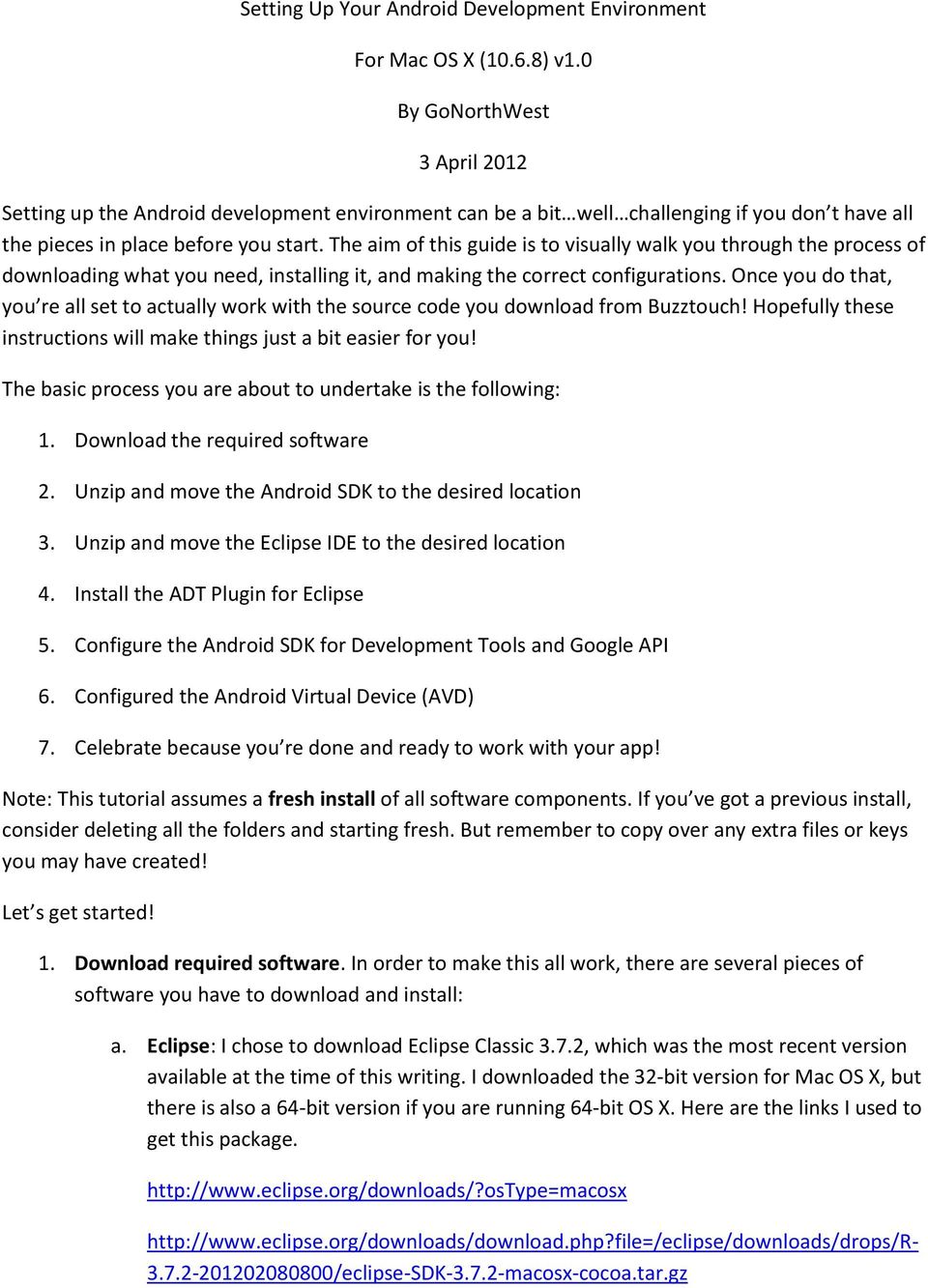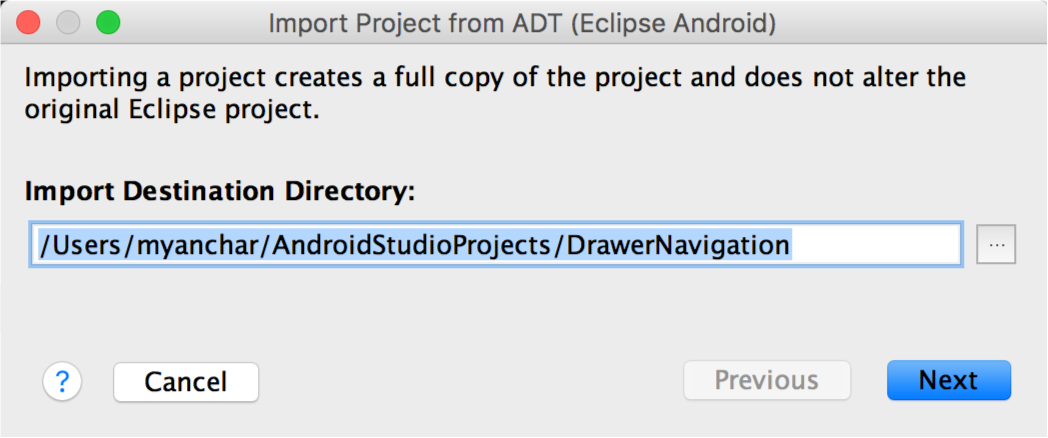
- #ECLIPSE ANDROID DEVELOPMENT FOR MAC FOR ANDROID#
- #ECLIPSE ANDROID DEVELOPMENT FOR MAC ANDROID#
- #ECLIPSE ANDROID DEVELOPMENT FOR MAC CODE#
- #ECLIPSE ANDROID DEVELOPMENT FOR MAC FREE#
#ECLIPSE ANDROID DEVELOPMENT FOR MAC ANDROID#
The Dalvik Debug Monitor Server (DDMS) perspective will likely be useful when the time comes to debug your Android applications. In general, when developing Android projects, some variation of the Java perspective is likely to be open, with the option of a few additional views, such as “LogCat,” where you can send and read the runtime output of your app. Once you have set a perspective, you can still make alterations to the visible views, as well as adjust the layout by dragging the view areas around to suit yourself. If you open the “Window” menu, then select “Open Perspective,” you will usually see at least two options: “Debug” and “Java.” The Java perspective will likely form the basis of your Android development process but for debugging, there is an Android-specific perspective called DDMS.
#ECLIPSE ANDROID DEVELOPMENT FOR MAC CODE#
In addition to the code editing area, you should see various aspects of the project represented in particular “views.”Ī perspective in Eclipse is a group of views arranged to present a project in a particular way. When you open Eclipse, depending on which “perspective” is open, you will typically see the screen divided into a number of distinct sections. The Eclipse user interface provides a variety of ways to view the elements in any project. Having been an Eclipse user for a reasonable amount of time now, I still discover features in it that I had no idea existed and that could have saved me a lot of hassle in past projects. Many display options, tools and shortcuts in Eclipse enable you to interact with your projects in a way that will make sense to you directly.

The Eclipse IDE, with the “Hello Android” project open.Įclipse has a huge amount of flexibility for creating a working environment for your development projects. Later sections include tips on using Eclipse specifically for Android, so you might find a bit or two in there that you haven’t explored yet.

#ECLIPSE ANDROID DEVELOPMENT FOR MAC FOR ANDROID#
If you already know your way around Eclipse, you can probably skip these first few sections, because they’re really aimed at people who are learning to use the IDE purely for Android development. Going over some features of Eclipse itself that would be useful for developing Android projects would be worthwhile. If you’re approaching Android as a Java developer and are already accustomed to Eclipse, you’ll likely grasp this material well. If you’ve already started developing for Android, you will almost certainly have come across some of them, but a few might be new to you, especially if you’re learning Android casually or part time. The aim here, then, is to provide a concise overview of Android development tools specifically in Eclipse.

I’ve used Eclipse for Java development on and off for a few years, having recently started learning Android casually.
#ECLIPSE ANDROID DEVELOPMENT FOR MAC FREE#
If so, please do feel free to mention them.

You might of course already be familiar with some (or all) of them and even be aware of others that we haven’t covered. In this article, we’ll go over a few tips, tools and resources that can maximize Eclipse’s usefulness and hopefully save you a few headaches. Whatever your past experience, you might feel tempted to start working away without checking that you’re making the best use of the IDE. Getting into Android development can be quite a challenge, particularly if you’re new to Java or Eclipse or both.


 0 kommentar(er)
0 kommentar(er)
